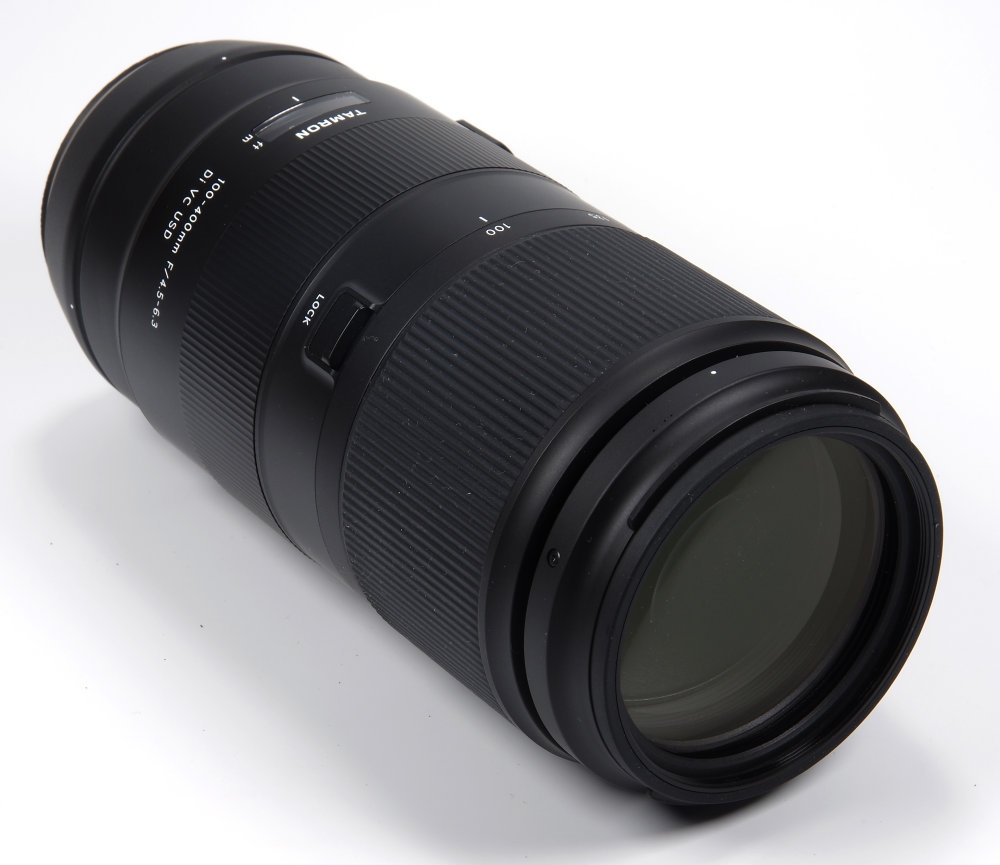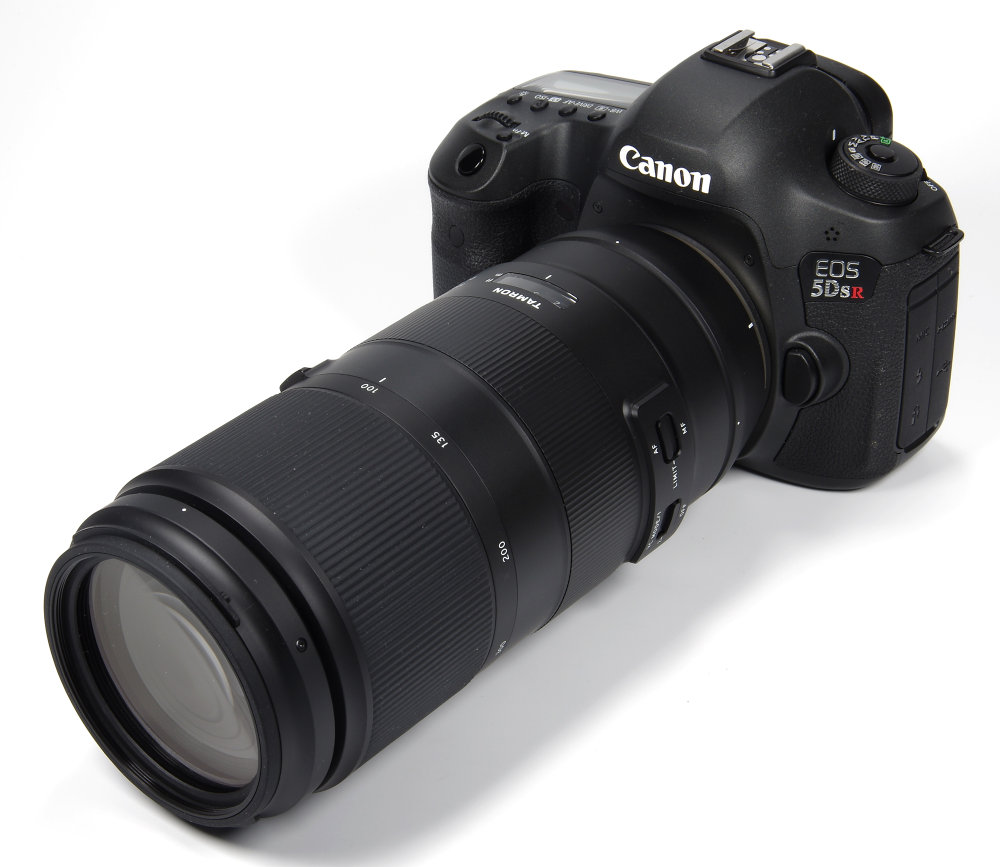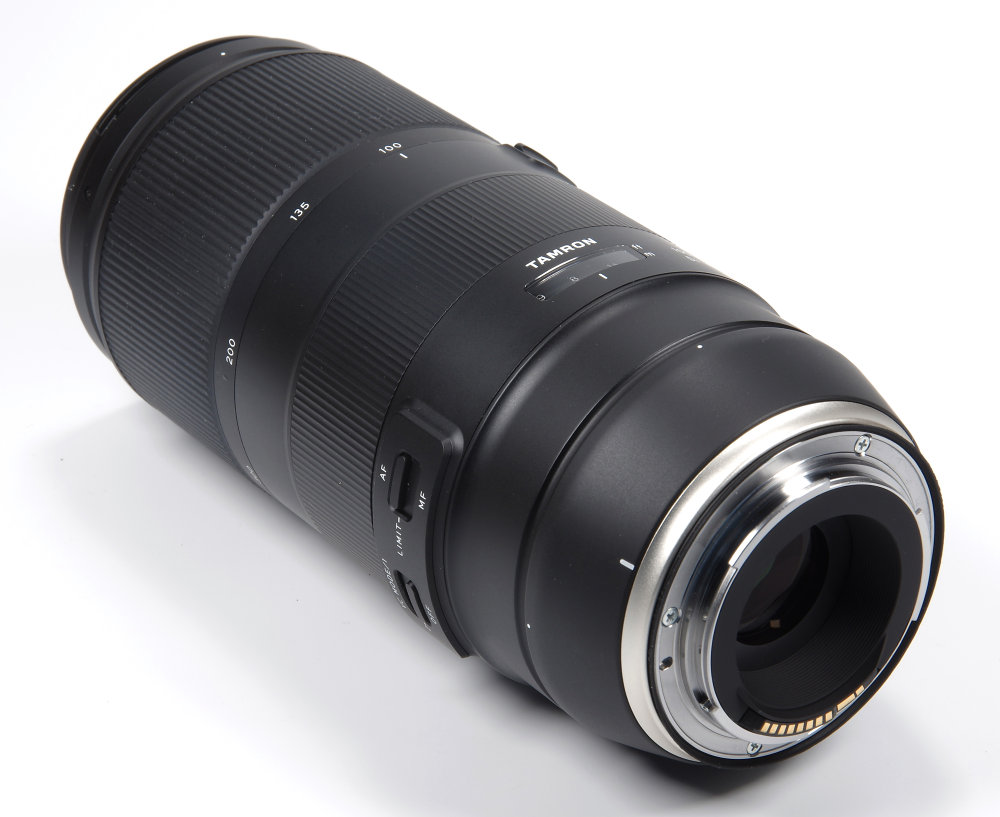Tamron 100-400mm f/4.5-6.3 Di VC USD Lens Review
Tamron 100-400mm f/4.5-6.3 Di VC USD Handling and Features
The lens is relatively compact for its specification, helped by the modest maximum aperture, appears well made and operates very smoothly. It weighs in at 1115g without caps or hood, 1180g with hood and 1320g with hood and tripod mount. Now although it is quite possible that higher end, solid DSLR mounts will happily carry the weight of the lens, it is arguable that it is much better to use the ARCA-SWISS compatible tripod mount. Doing so, especially using a camera carrying sling, means the lens and camera can be carried for hours without the weight being a problem. Inevitably, we pay for the tripod mount one way or another, but including it as standard might be a better route to take. Providing it as an optional extra cost, a further £109.99 on top of the lens price. The design of the tripod mount is pretty basic, requiring it to be loosened as a whole to rotate the lens for landscape or portrait orientation. It does an adequate job without finesse.
Taking our tour of the lens from the front, there is a large bayonet fit round lens hood provided, which locks securely into place. The filter thread is 67mm.
Behind this, the wide zoom ring is smooth and clearly marked with accurate focal lengths. There is a lock switch that enables the zoom to be fixed at 100mm, thus preventing the lens extending when being carried.
Moving closer to the camera body, the manual focusing ring can be used when the lens is set to AF, to switch instantly to manual focus. AF under these circumstances is resumed by taking the finger off the shutter release button and then resuming with a half press. A useful feature where a final tweak to the focus position is needed. Focusing does not alter the length of the lens, although zooming does.
Finally, forward of the tripod mount collar, there is a distance scale showing a guide in both feet and metres. There is no depth of field scale, and as it would probably be too cramped to be of use that is not really an issue. At this point on the lens barrel, there are two side switches. One is to switch the VC (Vibration Compensation) between Mode 1 (general use), Mode 2 (panning) and off. The other is to switch from AF, AF range limiter and MF. The limiter is set as standard to 7m to infinity or 1.5m to 7m. This is one of the parameters that can be adjusted using the optional Tamron TAP-In console. Closest focus is 1.5m or 59.1 inches, representing a maximum magnification of 1:3.6, usefully close.
The optical formula comprises 17 elements in 11 groups, including two LD (Low Dispersion). The coating is Tamron's eBAND, extended bandwidth, version of multi-coating, with a fluorine coating on the front element to repel water and grease. The lens is moisture resistant. It is also compatible with Tamron's 1.4x teleconverter, which extends the range significantly.
There is no doubt that 100-400mm is a very useful focal length range, bringing in all sorts of medium and long-range subject matter. It makes for a slightly unwieldy but manageable 100mm lens but a very easy to use 400mm, albeit with a fairly restricted maximum aperture. The VC system stabilises very quickly and the AF is fast and reliable. It makes an excellent match for the Canon EOS 5DS R and would also for other full frame bodies. It can, of course, also be used on APS-C format bodies, where it would have an equivalent range of 150-600mm (Nikon) or 160-640mm (Canon).
Add your message
Please login here or if you've not registered, you can register here. Registering is safe, quick and free.
photodo Stats
428 MTF tests
74 in-depth photodo reviews
100+ users join each day
Help the lens community by reviewing or rating a lens today via our lens search
Latest Lens Reviews
- Chinon 28mm f/2.8 Vintage Lens Review
- Canon EF 70-200mm f/4L IS II USM Lens Review
- Samyang AF 85mm f/1.4 EF Review
- Sigma 70mm f/2.8 DG Macro Art Review
- Samyang AF 24mm f/2.8 FE Review
- Meike 50mm f/1.7 Review
- Tamron 70-210mm f/4 Di VC USD Review
- Lensbaby Burnside 35mm f/2.8 Review
- Asahi Super Takumar 50mm f/1.4 Review
- Asahi Super-Multi-Coated Takumar 135mm f/3.5 Review



